NIGERIA
(Updated 2009)(*)
1.GENERAL INFORMATION
1.1 Country Overview
1.1.1 Governmental System
Nigeria is a constitutional democracy and operates a federal system of government. The Nigerian federation consists of a Federal Government at the apex and thirty-six states, and the Federal Capital territory which includes the administrative capital, Abuja. There are also 774 Municipal Councils or Local Government Areas in the federation. The Federal Government has the exclusive responsibility for foreign policy, national security, defense, monetary policy and national planning. Nigeria operates a presidential system of government similar to the American system. At the federal or national level, there is an Executive President elected popularly on the platform of a political party. The president forms a government of Ministers (Secretaries). The federal legislature consists of the Senate and House of Representatives of elected members. Each state has an elected Executive Governor and members of the State House of Assembly while the Local Governments elect a Chairman and councilors. The three-tiers of government share revenues and allocate responsibilities according to the provisions of the Constitution. The official currency is the Naira (N1 = 100 Kobo).
1.1.2 Geography and Climate
Nigeria is located on the west coast of Africa. It is bordered on the north by the Niger and Chad; on the east by Cameroon; on the west by the Benin; and is bounded on the south by the Gulf of Guinea and Equatorial Guinea. It has a total area of 923,766 square kilometers of which the land area consists of 910,768 square kilometers, while the balance of 13,000 square kilometers is water, with a total coastline of 853 kilometers. The land area spans over six ecological zones, ranging from swampy coastal rain forest of the South to the semi-arid fertile grassland of the Eastern region, about 600 meters over the Northern region and 300 meters over the Western region. The Coastal southern regions are the low-lying grounds which are generally below 300 meters and are characterized by creeks and lagoons on both sides of the Niger delta. The main drainage systems are the Niger-Benue Rivers, the Lake Chad and the coastal river systems as shown in the map in Figure 1.
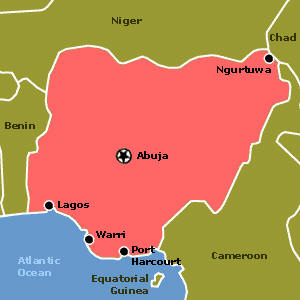
Figure 1: Map of Nigeria.
Source: UN Statistics Division
The official language is English, and the major indigenous languages are Hausa, Yoruba and Igbo. The main religions are Islam (50%), Christianity (40%) and Traditional (10%). The main commercial and industrial cities are Lagos, Onitsha, Kano, Ibadan, Port Harcourt, Aba, Maiduguri, Kaduna, Warri, Benin. Sea ports are located at Lagos (Apapa, Tin-can Island), Warri, Port Harcourt, Onne Deep Sea and Hub Port and Calabar (EPZ), while international airports are at Lagos, Kano, Port Harcourt and Abuja. In the area of transportation, the road network consists of over 15,000 km of intercity all weather paved roads, including dual carriage express trunks. There are two main railway lines (South-West to North-East; South-East to North-West) inter-linked and terminating at Lagos, Port Harcourt, Kaura Namoda, Maiduguri and Nguru; with major junctions at Kaduna, Kafanchan and Zaria. Gauge: 1067mm; and a total length of 3505 route km.
The vegetation is typical of what is obtainable in a tropical climate. There are four broad vegetation belts: the Mangrove Swamp on the coast, the Rain Forest, the Woodland Savannah, and the Guinea and Sudan Savannah in the North.
Temperatures across the country are relatively high with a very narrow variation in seasonal and diurnal ranges (22-38 degrees Celsius). There are two basic seasons: wet season which lasts from April to October; and the dry season which lasts from November till March. The dry season commences with the Harmattan, a dry chilly spell that lasts till February and is associated with lower temperatures, a dusty and hazy atmosphere brought about by the North-Easterly winds blowing from the Arabian peninsula across the Sahara; the second half of the dry season, February - March, is the hottest period of the year when temperatures range from 33 to 38 degrees centigrade. The extremes of the wet season are felt on the southeastern coast where annual rainfall might reach a high of 330cm; while the extremes of the dry season, in aridity and high temperatures, are felt in the north third of the country.
1.1.3 Population
Nigeria, with a population of more than 150 million, is a highly populated country with a wide diversity of peoples. The population is made up of about 374 distinct ethnic groups. Three of them, Hausa, Ibo and Yoruba are the major groups and constitute over 40 per cent of the population. In fact, about 10 ethnic linguistic groups constitute more than 80% of the population: the other large groups are Ijaw, Tiv, Ibibio, Kanuri, Nupe, Gwari, Igala, Jukun, Idoma, Fulani, Edo, and Urhobo. The gender divide of Nigeria's population, as indicated by the last census in 2006, reflects an unusual imbalance in favour of male dominance; 51% male: 49% female. Tables 1 to 6 depict the national demographic, economic and energy statistics.
TABLE 1. POPULATION INFORMATION
| Average annual growth rate (%) | |||||||
| 1970 | 1980 | 1990 | 2000 | 2006* | 2008** | 2000 to 2008 | |
| Population (millions) | 61.86 | 75.55 | 86.97 | 116.03 | 140..43 | 149.65 | 3.62 |
| Population density (inhabitants/km²) | 67 | 82 | 94 | 125 | 152 | 162 | 3.70 |
| Urban Population as % of total | 37 | 40 | 45 | 47 | 0.88 | ||
| Area (1000 km²) | 923.77 | ||||||
* Latest available data from national census **Extrapolated data from 2006
Source: National Population Commission, Abuja
1.1.4. Economic Data
TABLE 2. GROSS DOMESTIC PRODUCT (GDP)
| Average annual growth rate (%) | |||||||
| 1970 | 1980 | 1990 | 2000 | 2005 | 2007** | 2000 to 2007 | |
| GDP (millions of current US$) | 7,392 | 32,450 | 44,160 | 75,910 | 98,830 | 144,062 | 12.83 |
| GDP (millions of constant 2000 US$) | 18,181 | 59,127 | 59,609 | 75,910 | 85,063 | 116,774 | 7.69 |
| GDP per capita (PPP* US$/capita) | 182 | 1248 | 1750 | 2333 | 2935 | 3383 | 6.43 |
| GDP per capita (current US$/capita) | 119 | 671 | 718 | 994 | 1,159 | 1626 | 9.08 |
* PPP: Purchasing Power Parity ** Latest available data
Sources: Nigerian Federal Bureau of Statistics, Abuja; and http://www.economywatch.com/economic-statistics/Nigeria/GDP_Per_Capita_PPP_US_Dollars
1.2 Energy Information
1.2.1 Estimated available energy
TABLE 3. ESTIMATED AVAILABLE ENERGY SOURCES
| Estimated available energy sources | ||||||
| Fossil Fuels | Nuclear | Renewables | ||||
| Solid** | Liquid+ | Gas | Uranium | Hydro | Other Renewable*** |
|
| Total amount in specific units* | 2,734 | 10.687 | 5,292 | N/A | 18.75 | |
| Total amount in Exajoule (EJ) | 3,838 | 384 | 197 | N/A | 5.32 | |
· Solid: Billion tons; Liquids: Billion m3; Gas: Billion m3; Uranium: Metric tons; Hydro, Renewable: GW
** Coal and Lignite; does not include Fuel Wood which covers 11 million hectares of forest and woodland
+ Taken from APPA Bulletin (2008); Liquids includes 4.93 billion m3 of oil equivalent of tar sands.
***Wind: (2-4) m/s at 10m height; Solar Radiation: 3.5 - 7.0 kWh/m2/day (485.1million MWh/day using 0.1% land area)
Sources: Federal Ministry of Mines and Steel Development; Nigerian National Petroleum Corporation; and Energy Commission of Nigeria.
1.2.2 Energy Statistics
TABLE 4. ENERGY STATISTICS
| Average annual growth rate (%) | |||||||
| 1970 | 1980 | 1990 | 2000 | 2005 | 2006 | 2000 to 2006* | |
| Energy consumption** | |||||||
| - Total | 15,948 | 85,328 | 126,967 | 102,360 | 157,511 | 111,582 | 1.50 |
| - Solids Coal*** | 199 | 341 | 242 | 29 | 22 | 22 | -4.02 |
| - Solids Fuel Wood*** |
6.87 | 20.20 | 59.35 | 174.38 | 298.91 | 332.93 | 15.15 |
| - Liquids | 14,793 | 81,247 | 119,859 | 84,887 | 140,932 | 99,762 | 2.92 |
| - Gases (Natural) | 21.09 | 481.97 | 1856.23 | 10828.2 | 3188.30 | 873.78 | -15.32 |
| - Nuclear | 0.00 | 0.00 | 0.00 | 0.00 | 0.00 | 0.00 | - |
| - Hydro | 928.1 | 3237.8 | 4950.0 | 6441.6 | 13070.2 | 10590.9 | 10.74 |
| - Other Renewables |
0.00 | 0.00 | 0.00 | 0.00 | 0.00 | 0.00 | |
| Energy production | |||||||
| - Total | 84,063 | 32,299 | 145,746 | 153,708 | 254,873 | 278,907 | 13.58 |
| - Solids*** | 83,135 | 29,061 | 140,796 | 147,266 | 241,803 | 268,316 | 13.70 |
| - Liquids | |||||||
| - Gases | |||||||
| - Nuclear | 0.00 | 0.00 | 0.00 | 0.00 | 0.00 | 0.00 | - |
| - Hydro (GWh) | 928.1 | 3237.8 | 4950.0 | 6441.6 | 13070.2 | 10590.9 | 10.74 |
| - Other renewables | 0.00 | 0.00 | 0.00 | 0.00 | 0.00 | 0.00 | - |
| Net import (Import - Export) | |||||||
| - Total | |||||||
* Latest available data ** Energy consumption = Primary energy consumption + Net import (Import - Export) of secondary energy.
*** Solid fuels include coal, lignite and fuel wood
Source: Energy Commission of Nigeria, Abuja.
1.2.3 Energy policy
In 1999, the Federal Government took a bold decision to get the national economy to be private sector driven. The strong nexus between energy and socio-economic development made the Federal Government approve, in 2003, an overall National Energy Policy (NEP) for the nation. The NEP, as envisaged, is hinged on a private sector driven energy sector in line with the national economic policy.=
The major objectives of the National Energy Policy include:
To ensure the development of the nation’s energy resources, with diversified energy resources option, for the achievement of national energy security and an efficient energy delivery system with an optimal energy resources mix.
To guarantee increased contribution of energy productive activities and to national income.
To guarantee adequate, reliable and sustainable supply of energy at appropriate costs and in an environmentally friendly manner, to the various sectors of the economy, for national development.
To guarantee an efficient and cost effective consumption pattern of energy resources.
To accelerate the process of acquisition and diffusion of technology and managerial expertise in the energy sector and indigenous participation in energy sector industries, for stability and self-reliance.
To promote increased investments and development of the energy sector industries with substantial private sector participation.
To ensure a comprehensive, integrated and well informed energy sector plans and programmes for effective development.
To foster international co-operation in energy trade and projects development in both the African region and the world at large.
To successfully use the nation’s abundant energy resources to promote international co-operation.
1.3 The electricity system
1.3.1 Electricity policy and decision making process
The major power utility in the country, the National Electric Power Authority (NEPA), now known as the Power Holding Company of Nigeria (PHCN) is owned by the Federal Government. Until recently, it has been the main electric power monopoly for the generation, transmission and distribution of centralized grid power. In order to engender greater efficiency and sustainability in the system, a process of reforms has been started to remove government’s monopoly on generation, transmission and distribution. Thus, in 2005, the Electric Power Sector Reform Act (EPSRA) was enacted. The law is aimed at liberalizing the power sector. A component of the power reform law, was the creation of the Nigerian Electricity Regulatory Commission (NERC), which is mandated to regulate the electricity sector based on free market economic principles and thereby create a level playing field for all interested stakeholders to participate in the sub-sector.
As a consequence of the reform process, the generation and distribution areas of the electricity market are being deregulated. The PHCN is being unbundled into six separate generation companies and eleven distribution companies for the various parts of the country. These would be individually licensed, while only the transmission area would remain under government control in the Transmission Company of Nigeria (TCN).
In light of the current pathetic power situation in the country, and in spite of the current liberalization process, the Federal Government is still increasing investments in the sector to increase the generation capacity to 10,000MW by 2011 and to 20,000MW by 2015 through the National Integrated Power Projects being implemented across the country. Most of the additional capacity would be thermal (Gas) plants with renewable such as solar, biomass and wind contributing a minimal amount. Nuclear power has been factored into the energy mix, and it is expected that the first nuclear power plant of 1,000MW capacity is expected to be commissioned not later than 2020.
1.3.2 Structure of electric power sector
The electric power sector is currently dominated by a government company, namely, the Power Holding Company of Nigeria (PHCN). It currently owns all the power generation stations, the transmission network and the distribution system. It has an installed capacity of 6000MWe through a number of hydro (Kainji, Jebba, Shiroro), and thermal stations (Egbin, Ughelli, Afam, Sapele). The Power Holding Company of Nigeria (PHCN) Generation and Transmission System and its geographical distribution is graphically depicted in Figure 2. The transmission voltage levels are 330KV for the grid transmission; 132KV for the sub-transmission lines, whilst the 33kV, 11KV and lower voltages constitute the distribution networks. The System normal frequency is 50Hz.
With the expected full implementation of the Electric Power Sector Reform Act of 2005, and the unbundling of the PHCN into the proposed generation and distribution companies under a functional regulatory regime, the electricity market will be liberalized. However, a large number of manufacturing companies currently generate their own power, which further leads to increased cost of production.
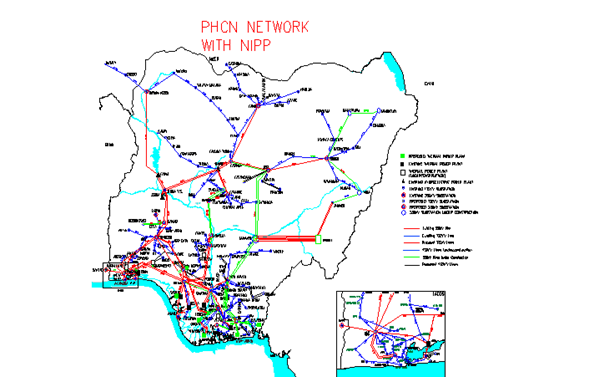
Figure 2: The Electric Power System in Nigeria
Source: PHCN, Abuja.
1.3.3 Main indicators
TABLE 5. ELECTRICITY PRODUCTION, CONSUMPTION AND CAPACITY
| Average annual growth rate (%) | |||||||
| 1970 | 1980 | 1990 | 2000 | 2005 | 2007** | 2000 to 2007 | |
| Capacity of electrical plants (GWe) | |||||||
| - Thermal | 4.094 | 3.91981 | 4.718 | 6.163 | 8.18 | ||
| - Hydro | 1.9384 | 1.73787 | 1.9384 | 1.9384 | 1.65 | ||
| - Nuclear | 0.00 | 0.00 | 0.00 | 0.00 | 0.00 | 0.00 | - |
| - Wind | 0.00 | 0.00 | 0.00 | 0.00 | 0.00 | 0.00 | - |
| - Geothermal | 0.00 | 0.00 | 0.00 | 0.00 | 0.00 | 0.00 | - |
| - other renewable | 0.00 | 0.00 | 0.00 | 0.00 | 0.00 | 0.00 | - |
| - Total | 6.03246 | 5.88788 | 6.6564 | 8.1014 | 5.37 | ||
| Electricity production (TW.h) | |||||||
| - Thermal | 0.23 | 3.283 | 8.512 | 8.217 | 19.506 | 15.711 | 13.03 |
| - Hydro | 0.928 | 3.237 | 4.950 | 6.441 | 13.070 | 10.527 | 9.06 |
| - Nuclear | 0.00 | 0.00 | 0.00 | 0.00 | 0.00 | 0.00 | - |
| - Wind | 0.00 | 0.00 | 0.00 | 0.00 | 0.00 | 0.00 | - |
| - Geothermal | 0.00 | 0.00 | 0.00 | 0.00 | 0.00 | 0.00 | - |
| - other renewable | 0.00 | 0.00 | 0.00 | 0.00 | 0.00 | 0.00 | - |
| - Total (1) | 1.547 | 7.140 | 13.462 | 14.659 | 32.576 | 26.238 | 11.28 |
| Total Electricity consumption (TW.h) | |||||||
(1) Electricity transmission losses are not deducted.
* Latest available data ** Includes some NIPP plants which are yet to be fully commissioned.
Source: Energy Commission of Nigeria, Abuja.
TABLE 6. ENERGY RELATED RATIOS
| 1970 | 1980 | 1990 | 2000 | 2005 | 2007 | |
| Energy consumption per capita (GJ/capita) | 13.90 | 26.32 | 32.94 | 26.56 | 52.59 | 24.78 |
| Electricity consumption per capita (kW.h/capita) | 38.62 | 73.11 | 91.50 | 73.79 | 146.4 | 68.83 |
| Electricity production/Energy production (%) | ----- | ----- | ---- | ---- | ---- | ---- |
| Nuclear/Total electricity (%) | 0.00 | 0.00 | 0.00 | 0.00 | 0.00 | 0.00 |
| Ratio of external dependency (%) (1) | ----- | ----- | ---- | ---- | ---- | ---- |
(1) Net import / Total energy consumption.
2. NUCLEAR POWER SITUATION
2.1 Historical development and current organizational structure
2.1.1 Overview
Nigeria has for decades, been involved in many peaceful applications of nuclear science and technology. However, the Federal Government’s effort to improve the energy generation in the country necessitated the inauguration of an Inter-Ministerial Committee on Energy Resources in 2004. In the report of the committee, nuclear power was recommended as a major potential source for consideration in the country. Consequently, in June 2005, another Inter-Ministerial Committee was inaugurated to evaluate the feasibility of launching a national programme to deploy nuclear energy for electricity generation in the country. The committee’s report was favourable.
Based on these studies and in keeping with the provisions in the national energy policy to deploy nuclear energy for electricity generation, the Nigeria Atomic Energy Commission (NAEC) was activated by Act 46 of July 1976. As provided for in the Act, NAEC is mandated, as the focal national agency, to develop the framework and technical pathway to explore, exploit and harness atomic energy for peaceful applications in all its ramifications for the socioeconomic development of Nigeria in conformity with the policies of the Federal Government.
In compliance with the Presidential directive at the inauguration of the Board of NAEC, to develop the national roadmap which would lead to the deployment of nuclear power plants for generation of electricity in the country in ten to twelve years, a national nuclear power road map with detailed ways and means of achieving the national objective was developed. The nuclear power roadmap was approved and adopted by the Federal Executive Council in February, 2007.
Based on the NAEC Act, and the Federal Government’s decision as contained in Council decisions EC38(06)12, and EC5(07)9, and Presidential directive (PRES/101) of February 27, 2007, the Nigeria Atomic Energy Commission is empowered and designated as the national agency vested with the responsibility for the implementation of the national nuclear power programme. In this regard, NAEC is the focal agency for liaison and partnership with the IAEA and other development partners for the programme planning and implementation.
Chronologically, the various activities leading to the activation of the nuclear power programme can be listed as follows:
The Nigeria Atomic Energy Commission (NAEC) was created by Act No.46 of 1976; but did not become operational; not activated!
As part of the national manpower training and capacity building effort, two university-based nuclear energy centres were established in 1978 in Ile-Ife and Zaria. A third centre was established in 1991 at the Sheda Science and Technology Complex, Abuja
The Energy Commission of Nigeria (ECN); created by Decree 62 of 1979, is mandated to enunciate the national energy policy, taking into consideration the national energy needs, the available resources and how best to exploit them on a long-term basis to meet the national needs.
The Nigerian Nuclear Regulatory Authority (NNRA) created by Act 19 of 1995, and mandated to regulate all nuclear activities in the country, including the enforcement of all nuclear laws and regulations was activated and became operational in January, 2001.
The low level of electricity generation necessitated the inauguration of an Inter-Ministerial Committee on Energy Resources in 2004. Nuclear was identified as a major potential source for consideration in Nigeria
Inter-Ministerial Committee on NPP was inaugurated and a Technical Committee on NPP mandated to evaluate the feasibility of deploying NPP in June 2005.
NAEC was activated in April 2006; and 10-member Governing Board headed by Mr. President inaugurated in July 2006
National Nuclear Power Roadmap and Strategy for its implementation were approved and adopted by the Federal Government for implementation in February, 2007.
2.1.2 Current organizational chart(s)
The national management framework for the implementation of the nuclear power programme is depicted in Figure 3. As shown in the figure, the Minister of Science and Technology has direct responsibility for the development and implementation of the programme. The Energy Commission of Nigeria (ECN) develops and enunciates the national energy policy, taking into consideration the national energy needs, available energy resources and prescribes a suitable exploitation and utilization strategy. The focal agency for the formulation, design and implementation of the NPP is the Nigeria Atomic Energy Commission (NAEC). The Nigerian Nuclear Regulatory Authority is vested with the responsibility to ensure nuclear and radiological safety and security in the country and is mandated to license and regulate the operations of the nuclear power plants. The Nigeria Atomic Energy Commission, the Nigerian Nuclear Regulatory Authority and the Energy Commission of Nigeria operate within the aegis of the Federal Ministry of Science and Technology.
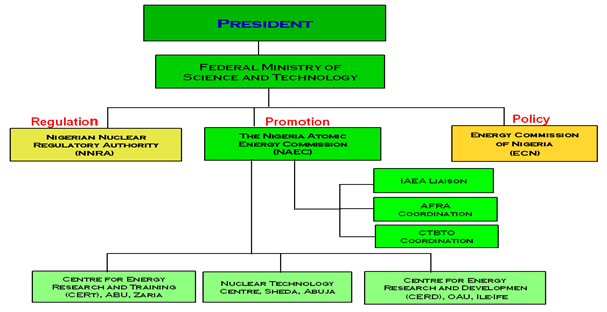
Figure 3: National Nuclear Power Management Framework
In order to achieve the objective of the Federal Government’s decision on the National Nuclear Power Programme in conformity with the prevailing law, the Nigeria Atomic Energy Commission (NAEC) is designated as the focal national agency for the implementation of the programme (NEPIO). However, notwithstanding this designation, the sustainable and successful implementation of the programme entails full participation of several other national stakeholder institutions. These agencies and institutions constitute the Nuclear Energy Programme Implementation Committee (NEPIC) under the Chairmanship of the Honourable Minister of Science and Technology. Each of these institutions performs specific roles in conformity with their designated mandates. Nevertheless, NAEC plays the central role of coordinating the inputs from each of these organizations to ensure synergy. The specific roles of agencies which constitute the NEPIC are as shown in Figure 4.
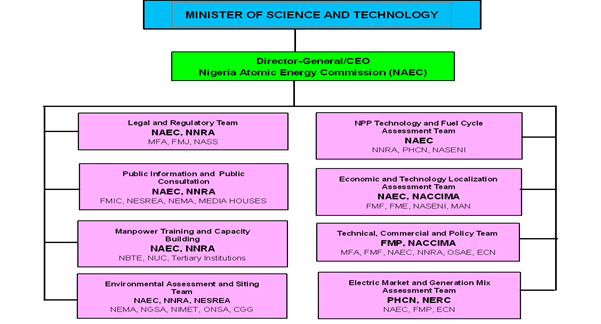
Figure 4: Stakeholder Agencies which constitute the Nuclear Power Implementation Committee (NEPIC)
2.2 Nuclear power plants: Overview
2.2.1 Status and performance of nuclear power plants
NOT APPLICABLE
2.2.2 Plant upgrading, plant life management and license renewals
NOT APPLICABLE
2.3 Future development of Nuclear Power
2.3.1 Nuclear power development strategy
The Nigeria government has shown firm commitment to introduce nuclear power into its energy mix. As part of the government’s programme to deploy nuclear power plants for electricity generation in the country, the Nigeria Atomic Energy Commission was activated in April 2006, and a 10-member Governing Board headed by Mr. President was inaugurated in July 2006.
Thereafter, a National Nuclear Power Roadmap and Strategy for its implementation were approved and adopted by the Federal Government for implementation in February, 2007. The nuclear roadmap which is encapsulated in a Technical Framework for NPP Deployment consists of three phases, namely:
Manpower Training, Capacity Building and Infrastructure Development;
Design Certification; Siting; Regulatory and Licensing Approvals; and
Construction and Start-up.
The strategic plan for the implementation of the programme is aimed at enabling Nigeria to:
Generate electricity from NPP in twelve years; and
Develop the local capacity to internalize nuclear power as a major source of electricity for the long-term energy security of the country.
In this regards, the strategy has the following targets:
Supply of electricity from a nuclear power plant into the national grid by 2020 and building the nuclear capacity up to 4,000 MWe by 2030;
Develop the requisite indigenous manpower and capacity to ensure the continuous availability of human capital and infrastructure base for the operation and maintenance of the nuclear power plants;
Laying a solid foundation for the localisation of nuclear technology; and
Catalyzing the strengthening and expansion of the integrity and capacity of the national electricity grid to cope with the introduction of NPPs.
The Strategic Plan, as shown in Figure 5, is broken into three parts. The first is the short-term which deals with the immediate activities of putting the project management structures to effectively launch and implement the programme. The medium-term strategy entails all the activities that will lead to the construction and operation of the first NPP through a Turnkey contractual arrangement, while the long-term phase of the strategy addresses the issues of expanding the NPP programme to build multiple units, spent fuel and waste management.
TABLE 8. PLANNED NUCLEAR POWER PLANTS
2.3.2 Project management
The Nigeria Atomic Energy Commission, which operates under the aegis of the Federal Ministry of Science and Technology, is vested with the primary responsibility for the planning and implementation of the country’s nuclear power programme. It will be primarily responsible for the management and implementation of the NPP project, which is expected to be delivered on a turnkey basis after competitive bidding for the first set of power plants. The structure of the Commission which is a technical organization is shown in figure 6.
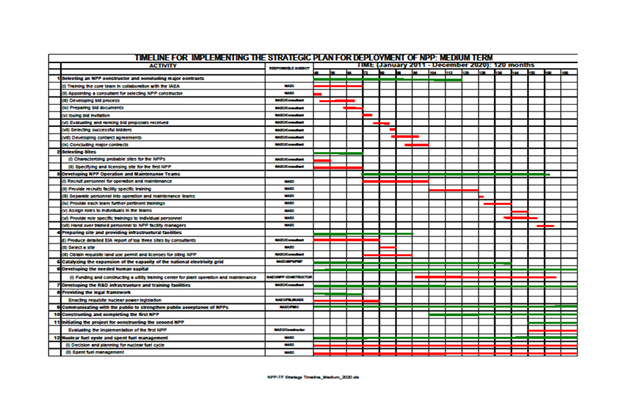
Figure 5a: Medium Term Component of the National Strategic Plan
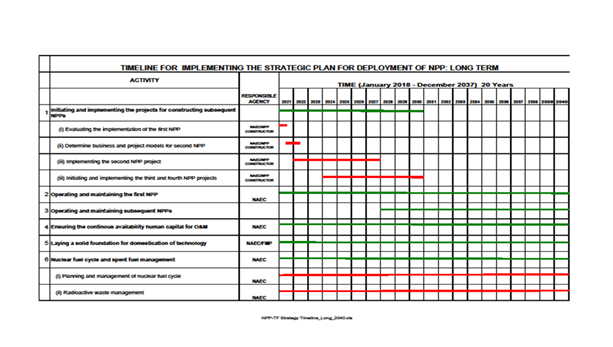
Figure 5b: Long Term Component of the National Strategic Plan
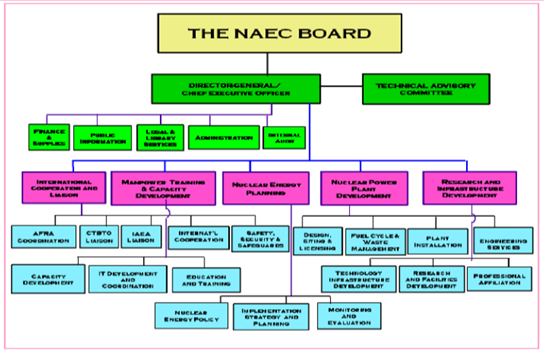
Figure 6: Organogram of the Nigeria Atomic Energy Commission
2.3.3 Project funding
Currently, the funding of the manpower training and infrastructure development component of the programme is being funded by the Federal Government. It is also expected that the Federal Government will be directly involved in the financing of the construction of the power plants, either through national resources or loan guarantees. The first project will be implemented on a turnkey basis and the actual model of financing is yet to be decided.
2.3.4 Electric grid development
As part of the current power sector reforms by the government, it is envisaged that there would be massive upgrade and redesign of the transmission network to cope with additional capacity needed to meet the projected increase in demand for electricity up to the year 2030. Going by the current plans and programmes, the capacity of the transmission network would be strong and stable enough to absorb 10,000MWe by the end of 2010, and would increase to 16,000MWe in 2012. Given the state of commitment of government, it is expected that at the time nuclear power plants will become operational, the grid will be strong and stable enough to absorb the injection of electricity from the nuclear plants. This is already an important component of the NPP development strategy.
2.3.5 Site Selection
Following site survey and site evaluation exercises embarked upon by the Commission, four sites have been designated for further detailed characterization and recommendation to government. The sites are located in the areas around:
Geregu/Ajaokuta Local Government Area of Kogi State in the North Central Zone of the country.
Itu Local Government Area of Akwa Ibom State in the South-South Zone.
Agbaje, Okitipupa Local Government Area of Ondo State in the South West Zone.
Lau Local Government Area of Taraba State in the North-East Zone.
In the preliminary site survey and evaluation project, a number of technical, environmental, security, social and economic issues were investigated as shown in the chart of activities in Figure 7. All the sites currently being considered would be able to accommodate more than one nuclear power plant.
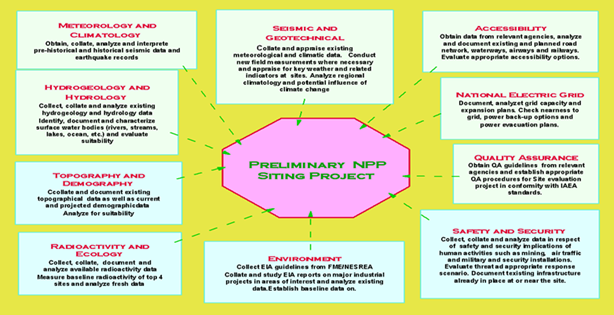
Figure 7: Structure of the NPP Preliminary Site Survey and Evaluation Project
2.4 Organizations involved in construction of NPPs
NAEC is responsible for the implementation of the nuclear power projects. It is still in the process of selecting appropriate nuclear power plant site(s), reactor technology and likely vendors.
2.5 Organizations involved in operation of NPPs
The operating organization will be decided later.
2.6 Organizations involved in decommissioning of NPPs
The decommissioning organization will be decided later.
2.7 Fuel cycle including waste management
It is not envisaged that the Nigerian nuclear power programme would develop indigenous fuel cycle technologies and related facilities in the near future. The fuel supply for the nuclear power plants will be a part of the supply contracts.
In order to promote the safe management of radioactive sources in the country, a National Policy and Regulations on Radioactive Waste Management is being developed. A comprehensive Spent Fuel Policy, Regulation and Guidance document is being prepared by a technical committee. Furthermore, a centralized facility for the management of low and intermediate radioactive wastes is currently being developed to deepen the culture of nuclear wastes safety. These programmes are being developed in collaboration with the IAEA.
2.8 Research and development
2.8.1 R&D organizations
The capacity building and infrastructure development components of the national programme are based in the three nuclear research centers, namely:
Center for Energy Research and Training (CERT), Ahmadu Bello University, Zaria, Kaduna State;
Center for Energy Research and Development (CERD), Obafemi Awolowo University, Ile-Ife, Osun State;
Nuclear Technology Centre (NTC), Sheda Science and Technology Complex, Abuja, FCT.
2.8.2 Development of advanced nuclear technologies
NOT APPLICABLE
2.8.3 International co-operation and initiatives
Nigeria has benefited, in the area of nuclear power development, from the Technical Cooperation assistance of the IAEA through the following programmes:
Energy Planning Studies Using Appropriate Analytical Tools;
Feasibility Study for NPP development;
Development of Legislative Framework for NPP Implementation;
Development of Regulatory Framework and Infrastructure;
Developing Capacities in Pre-Project Activities for Nuclear Power Projects; and
Development of a Comprehensive National Radioactive Waste Management System and Disposal Facility, among others.
The Government of Nigeria, is also exploring avenues for further international cooperation for the implementation of the nuclear power programs. These will entail bilateral as well as multilateral cooperation agreements. Furthermore, Nigeria has decided to sign up as a partner with GNEP initiative, and at the appropriate time, will also fully participate in the INPRO project. Nigeria has also signed a cooperation agreement on nuclear power development with the Russian Federation. Some other agreements are also being considered.
2.9 Human resources development
The education and training programme for the implementation of nuclear power entails the deployment of a multi-pronged training strategy which will include formal education in universities and polytechnics; on-the-job training; facility-specific-training provided by reactor vendor organizations; direct participation during project implementation and partnerships with experienced power utility organizations for initial operation of power plants, among others.
In order to achieve these set objectives, the following steps will be taken:
The initial phase of the national training programme to support the introduction of nuclear power entails the following:
Strengthening and positioning local institutions for training of nuclear engineers, scientists and technicians. NAEC has entered into MOUs with several national universities and polytechnics for the purpose of producing the requisite manpower that will implement the programme in a sustainable manner.
Cooperation and partnership with off-shore institutions to train graduate nuclear scientists and engineers as potential faculty for the implementation of the training programmes in the local institutions.
Development of physical facilities such as laboratories, workshops and IT facilities, for the implementation of the training programmes in the designated institutions.
Provision of centralized relevant research facilities and infrastructure at the three national nuclear energy research centres for training and capacity building
Further avenues for human resource development would be provided through institutional linkages and bilateral cooperation for the training of suitably qualified and experienced personnel in the various technical and allied fields in the sector to stimulate and enhance indigenous participation in the nuclear power industry.
2.10 Stakeholder Communication
There is sustained communication with the national stakeholder institutions in the nuclear energy programme as depicted in the roles being played by various organizations in the National Nuclear Energy Programme Implementation Committee (NEPIC) as shown in Figure 4 in section 2.1.2. Furthermore, NAEC is working with the Federal Ministry of Information and media organizations to develop appropriate ways and means of communicating effectively with the public and prepare their minds to be more receptive to the introduction of nuclear power in the country.
3. NATIONAL LAWS AND REGULATIONS
3.1 Regulatory framework
3.1.1 Regulatory authority(s)
The Nigeria Nuclear Regulatory Authority (NNRA) was created by the Nuclear Safety and Radiation Protection Act 19 of 1995 (Act 19 of 1995) and became operational in 2001. It is mandated to regulate all nuclear activities in the country, including the enforcement of all nuclear laws and regulations. It is also empowered to enforce all ratified and/or domesticated nuclear related international laws and treaties. NNRA is also responsible for radiation protection and nuclear safety. Its organogram and structure are depicted in Figure 8.
3.1.2 Licensing Process
Currently, procedures for the licensing of nuclear power facilities are being developed by the NNRA. A draft regulation for NPP site licensing has been developed and being reviewed.
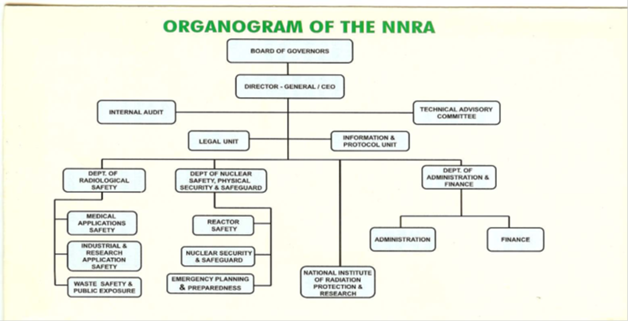
Figure 8: Organogram of the Nigerian Nuclear Regulatory Authority
3.2 Main national laws and regulations in nuclear power
Currently, the requisite operational laws in nuclear power development include:
The Nigeria Atomic Energy Commission Law (Act 46 of 1976) was enacted some 33 years ago. It is currently being amended to make it comprehensive and more wholesome, so as to position it to cover all aspects of nuclear power plants development, operation and decommissioning. Major elements which are being addressed in the law include nuclear security, radioactive materials and radiation, nuclear liability, radioactive waste, spent fuel and decommissioning, environmental protection, emergency notification of nuclear incidents, foreign investment, and safety of nuclear installations, among others.
Nuclear Safety and Radiation Protection Act 19 of 1995 establishing the Nigerian Nuclear Regulatory Authority (NNRA). This law is also being amended for comprehensive coverage of Nuclear Power.
National Environmental Standards and Regulations Enforcement Agency Act 25 of 2007.
On safety and security of radioactive sources, Nigeria has endorsed the IAEA Code of Conduct on the Safety and Security of Radioactive Sources and the associated Guidance on the import and export of radioactive sources. Nigeria has since 2006 promulgated the following regulations:
The Safety and Security of Radioactive Sources Regulations.
The Transportation of Radioactive Sources Regulations.
Nigerian Radioactive Waste Management Regulations.
Draft Regulations/Guidelines for Licensing of Sites for Nuclear Power Plants.
A National Nuclear or Radiological Emergency Response Plan (NNRERP) has been developed consistent with the requirements of the IAEA Safety Standard Series No. GS-R-2 and the International Safety Standards for the Protection Against Ionizing Radiation and for the Safety of Radiation Sources (BSS 115) and in accordance with the IAEA EPR-Method 2003. The NNRERP is being integrated into the National Disaster Response Plan (NDRRP) of the National Emergency Management Agency (NEMA).
Nigerian Radiation Safety in Diagnostic and Interventional Radiology Regulations,
Nigerian Radiation Safety in Radiotherapy Regulations,
Nigerian Radiation Safety in Nuclear Medicine Regulations.
REFERENCES:
APPENDIX 1: INTERNATIONAL, MULTILATERAL AND BILATERAL AGREEMENTS
Nigeria has ratified the following international treaties:
Treaty on non-proliferation of nuclear weapons (In force)
Convention on early notification of a nuclear accident (In force)
The Treaty of Pelindaba on the African Nuclear-Weapon-Free zone (Not in force)
African Regional Co-operative Agreement for research, Development and Training related to nuclear science and technology (AFRA) (Third Convention) (In force)
Comprehensive safeguards agreement in connection with the treaty on non-proliferation of nuclear weapons (In force)
Convention on assistance in the case of a nuclear accident or radiological emergency (In force)
Additional protocol to the NPT (In force)
Convention on nuclear safety (In force)
Convention on physical protection of nuclear material (as amended in 2005) (In force)
Joint convention on safety of spent fuel management and on the safety of radioactive waste management (In force)
Vienna convention on civil liability for nuclear damage (In force)
Joint protocol relating to the application of the Vienna Convention and the Paris Convention (In force; yet to accede)
Agreement on the privileges and immunities of the IAEA (In force); and
Agreement with the Russian Federation on Cooperation in the Development of Nuclear Energy for Peaceful Uses.
APPENDIX 2: MAIN ORGANIZATIONS, INSTITUTIONS AND COMPANIES INVOLVED IN NUCLEAR POWER RELATED ACTIVITIES
| Acronym | Name of Organization | Address or website |
| NAEC | Nigeria Atomic Energy Commission | www.nigatom.org.ng |
| NNRA | Nigerian Nuclear Regulatory Authority | www.nnra.gov.ng |
| CERT | Centre for Energy Research and Training | |
| CERD | Centre for Energy Research and Development | |
| NTC | Nuclear Technology Centre | www.nigatom.org.ng |
| NERC | Nigerian Electricity Regulatory Commission | www.nercng.gov |
| ECN | Energy Commission of Nigeria | www.energy.gov.ng |
| NEPIC | Nuclear Energy Programme Implementing Committee | www.nigatom.org.ng |
| NESREA | National Environmental Standards and Regulations Enforcement Agency | www.nesrea.org |
| PHCN | Power Holding Company of Nigeria | www.phcnonline.com |
| TCN | Transmission of Company of Nigeria | www.tcnng.org |
Name of report coordinator; Institution and Contacts
Dr. F. Erepamo Osaisai
Nigeria Atomic Energy Commission
9, Kwame Nkrumah Crescent, Asokoro,
P.M.B. 646, Garki, Abuja, NIGERIA
Tel: +234 9 6711485
Fax: +234 9 3146515
Email: dgnaec@nigatom.org.ng
Website: www.nigatom.org.ng
